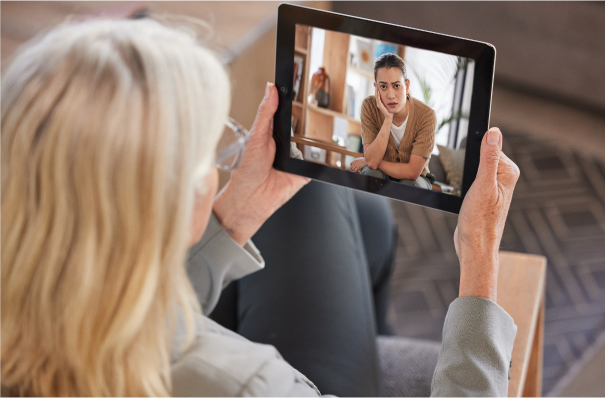What is it?
Online Therapy
Online therapy is, effectively, psychotherapy that is conducted through a video camera installed in your computer, with the use of web-based applications (Skype*). The experience is similar to going to a physician or therapist's office except the drive is avoided. For many potential clients this is important because of time or distance problems. People in rural areas have fewer health care options locally.This method of video therapy online increases your ability to access assistance and broadens your choices.
Research shows that Internet based psychotherapeutic interventions prove to be a legitimate and an effective therapeutic activity. It has been found to be helpful in treating a range of psychological disorders such as anxiety, depression, and emotional difficulties such as mid-life and/or identity crises, issues with self-confidence, difficulty in assertiveness, stress management, difficulty in communication, as well as a wide range of challenges presented to every individual. Findings are generally positive and indicate that, through this media, the working alliance that develops in the therapeutic process has a good, deep and authentic quality, the results of which being not less effective in healing process than that of face-to-face sessions.



How does it work?
The online psychotherapy differs from the above only inasmuch as you are in your own space (home, hotel room, office) and therefore the responsibility for creating a quiet and safe environment for the sessions is yours. In this case, it is highly advisable that you find a space which makes you feel comfortable, safe and that gives you the confidence that there will be no people ‘invading’ it or that someone might overhear what you or your therapist are talking about.
There may be occasions when you might indeed be interrupted but, as long as these instances are not recurrent, there will be no impact on your actual therapy.
Technical requirements
Ideally, you should have an Internet connection of at least 1 Mbps and a desktop or laptop with video conferencing capabilities, such as Skype, Zoom or Teams. If the computer has a built-in camera, it should be easy to establish communication. Some people prefer to use an external high-definition (plug-in) camera mainly due to the fact that both picture and sound quality are better (depending on the technology of the computer you have).
However, I encourage my clients to use Zoom, a platform that is quickly becoming the norm in 'tele healthcare' not only because it is more stable but also guarantees enhanced levels of cyber-security.
Contact
Contact me and make an appointment.
To book an appointment, please email me or forward a note to me using de form, or telephone me on the number below. If you send me a message, i will contact you within the next 24 hours, on business days. The information you provide will be treated in strict confidence.
